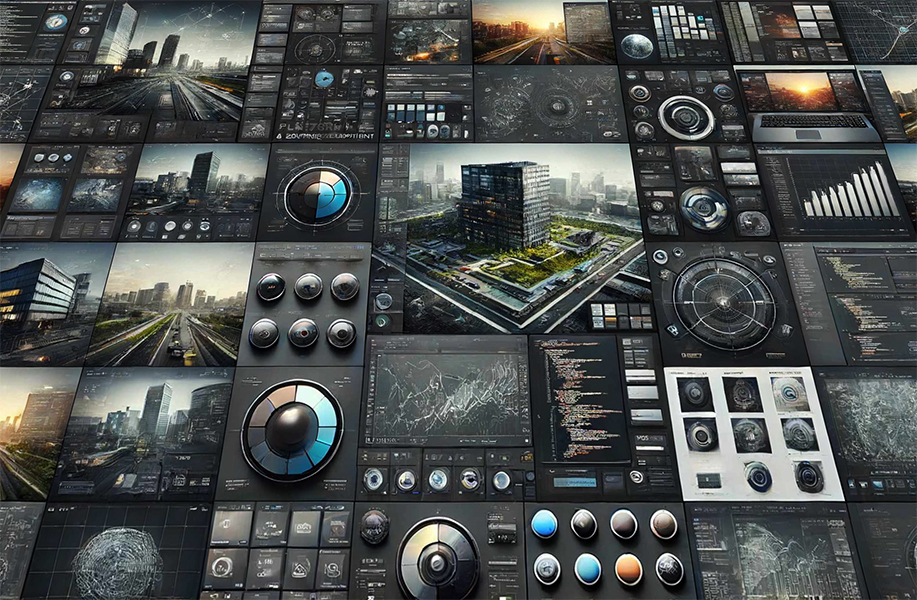Developing a Clean and User-Friendly UI for Apex Engine
Developing a Clean and User-Friendly UI for Apex Engine
 Creating an intuitive and user-friendly UI (User Interface) is crucial for any software application, especially for development tools. A well-designed UI enhances productivity, reduces learning curves, and ensures a seamless user experience.
Creating an intuitive and user-friendly UI (User Interface) is crucial for any software application, especially for development tools. A well-designed UI enhances productivity, reduces learning curves, and ensures a seamless user experience.
At TGS Tech, we prioritize creating intuitive and user-friendly UIs for our software applications, particularly for our flagship product, Apex Engine. A well-designed UI is crucial for enhancing productivity, reducing learning curves, and ensuring a seamless user experience for developers. Here’s an overview of the steps we take to develop a clean and user-friendly UI for Apex Engine.
Research and Feedback
The first step in our UI development process is gathering research and feedback from our past and present clients. Understanding their experiences with previous interfaces helps us identify common pain points and preferences. This feedback guides the overall style and ease of use for Apex Engine’s new UI, ensuring it aligns with user needs and expectations.
Identifying Needed Tools
We start by compiling a comprehensive list of tools required within Apex Engine. This list includes all the features and functionalities developers need to perform their tasks efficiently. By identifying these tools early, we ensure that the UI accommodates all necessary components, preventing any critical features from being overlooked.
Early Drawings and Layout Mapping
Before diving into detailed design, we create early drawings to map out the general layout. These sketches provide a visual representation of where each element will be placed, ensuring a logical and user-friendly arrangement. This step helps us visualize the flow and organization of the UI, making it easier to identify potential issues early in the design process.
Building Various Color Schemes
Color schemes play a significant role in the overall aesthetic and usability of the UI. We develop multiple color schemes to explore different visual styles and find the most appealing and functional options. The chosen color scheme enhances readability, reduces eye strain, and ensures a pleasant user experience for Apex Engine users.
Creating Early Mockups
With the layout and color schemes in place, we move on to creating early mockups of the UI and tools. These mockups provide a more detailed and polished view of the interface, incorporating the design elements and visual style. Early mockups help stakeholders visualize the final product and provide feedback on necessary adjustments.
Developing an Early Prototype
An early prototype of the UI with general functionality allows us to test the interface and identify any usability issues. This prototype includes basic interactions and features, providing a tangible representation of how the final product will function. Testing the prototype with a small group of users helps us gather initial feedback and make necessary adjustments.
Building the UI
Once the prototype has been refined, we build the UI for Apex Engine. This involves coding the interface elements, implementing the design, and ensuring all components work together seamlessly. Our focus during this stage is on creating a functional and visually appealing interface that meets the needs of developers.
Adjustments and Refining
After building the UI, we make adjustments and refine the tools as needed. This includes tweaking button sizes, adjusting colors, and making any necessary changes to improve usability. Continuous refinement ensures that the UI remains intuitive and user-friendly.
Connecting UI to Functionality
Connecting the UI to the functionality systems and code is a critical step in our development process. This integration ensures that the interface is not only visually appealing but also fully functional. We ensure that all features work as intended and that the UI provides a seamless user experience.
Testing and Feedback
Getting testers and client feedback is essential to ensure that the UI meets user expectations. Testing the UI with real users helps us identify any remaining issues and gather insights on how to improve the interface. Client feedback provides a final check to ensure that the UI aligns with user needs.
Finalizing Tools and Integration
Linking up the remaining tools and ensuring they are fully integrated into the UI is the final step. This includes adding any additional features, ensuring all components work together, and making final adjustments. We reiterate the connection between the UI and functionality to ensure that the interface remains responsive to changes and additions.
At TGS Tech, our commitment to developing a clean and user-friendly UI for Apex Engine involves a systematic process of research, design, prototyping, building, and refinement. By following these steps, we create an intuitive interface that enhances productivity and provides a seamless user experience for developers.